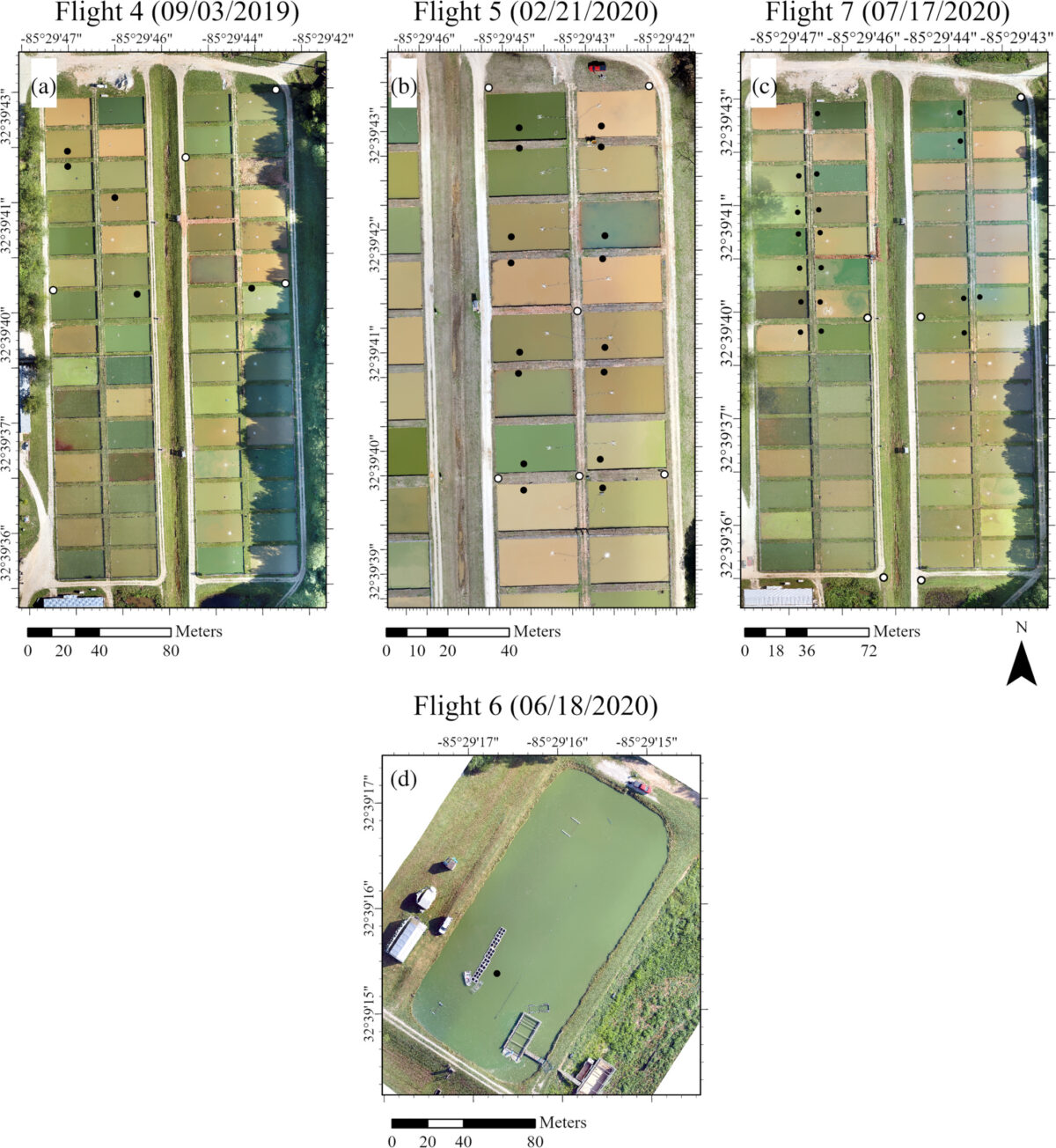
Citation
Fernandez-Figueroa, E. G., A. E. Wilson, and S. R. Rogers. 2022. Commercially available unoccupied aerial systems for monitoring harmful algal blooms: a comparative study. Limnology and Oceanography: Methods 20:146-158. (Top Cited Paper; Top Downloaded Article during first year post publication)
Abstract
Reliable remote sensing platforms and methods for monitoring phytoplankton are needed for mitigating the detrimental impacts of cyanobacterial harmful algal blooms on small inland waterbodies. Commercial unoccupied aerial systems (UASs) present an affordable high-resolution solution for the rapid assessment of cyanobacterial abundance in small aquatic systems by recording the reflectance of photosynthetic pigments found in all phytoplankton (i.e., chlorophyll a [Chl a]) and those related to cyanobacteria (i.e., phycocyanin). This study evaluates the performance of four sensors, including visible light spectra (red, green, blue – [RGB]) sensors on the Phantom 4 and Phantom 4 Professional platforms, the MAPIR Survey3W modified multispectral (i.e., near-infrared, green, blue) sensor, and the Parrott Sequoia multispectral (i.e., green, red, near-infrared, red-edge) sensor for estimating cyanobacterial abundance. The performance of each sensor was determined by comparing 26 vegetation indices to Chl a and phycocyanin measurements of 54 ponds that varied in size and productivity. Vegetation indices that included the red and near-infrared wavelengths generated from Parrot Sequoia aerial images provided the best Chl a (i.e., Normalized Difference Vegetation Index, r2 = 0.79, p < 0.0001) and phycocyanin (i.e., Green Normalized Difference Vegetation Index, r2 = 0.64, p < 0.0001) estimates. The RGB sensors were moderately effective for estimating Chl a, whereas the MAPIR Survey3W generated poor estimates of both pigments due to differences in recorded wavelengths. Results suggest commercial multiband multispectral UAS sensors provide a low-cost, plug-and-play alternative for managers and researchers interested in integrating remote sensing tools for quantitatively estimating phytoplankton abundance in small inland systems.